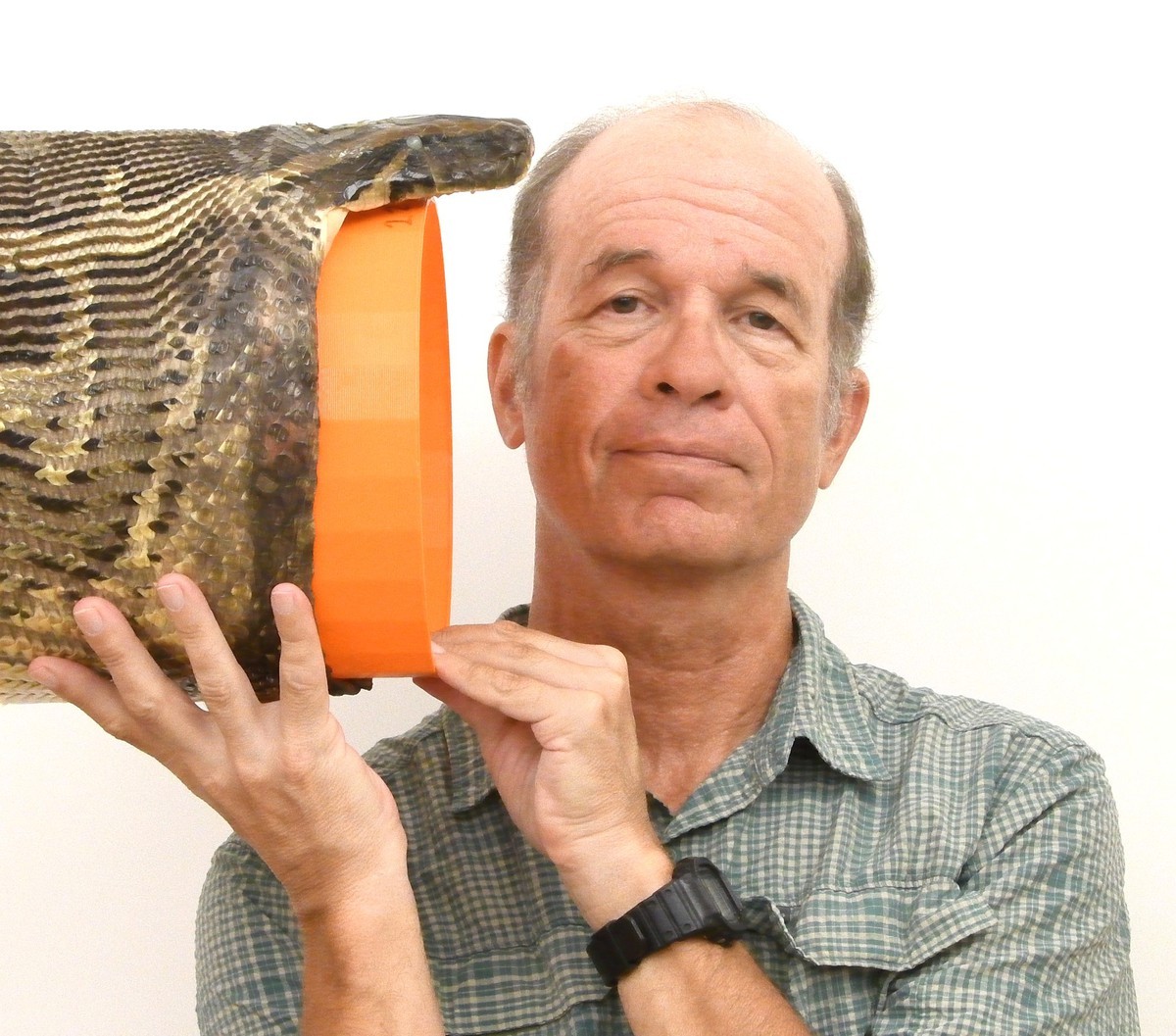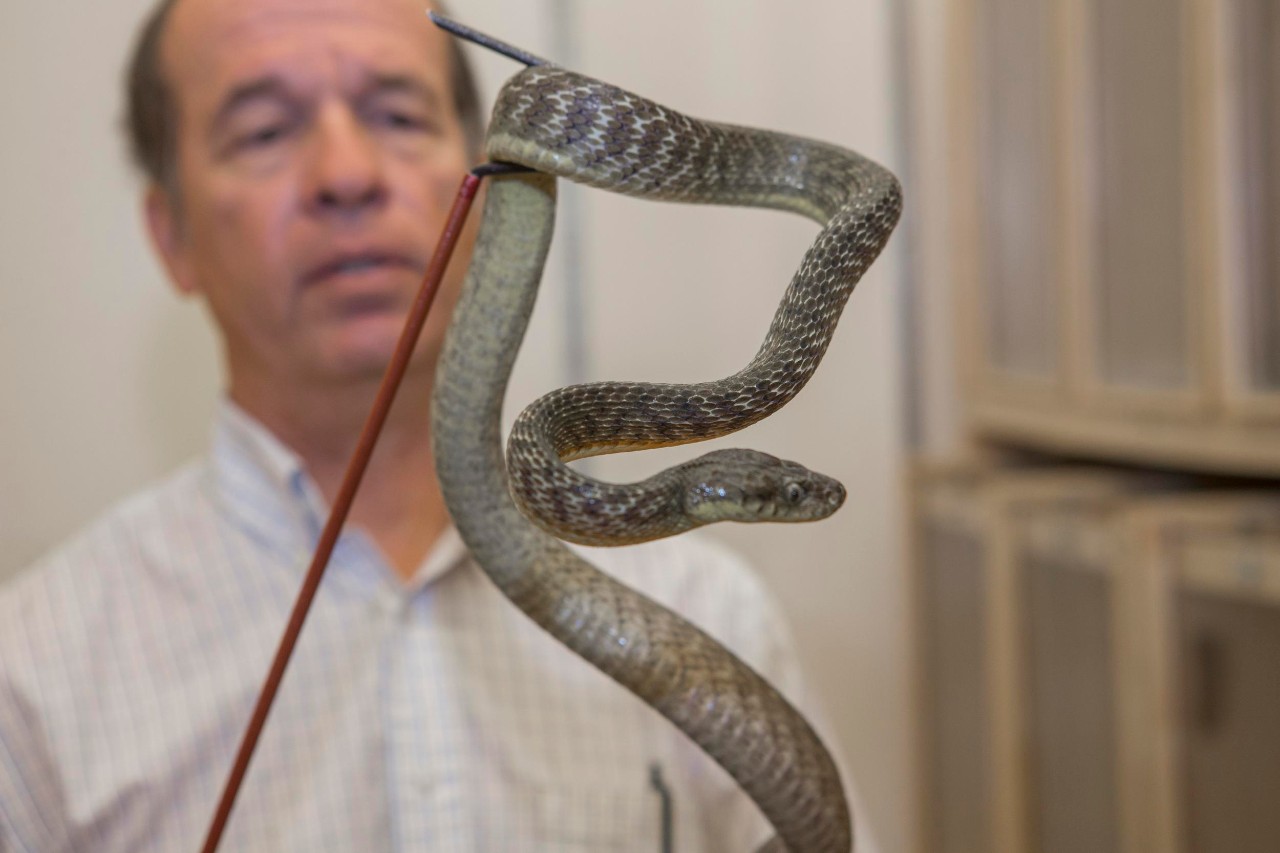Burmese pythons are not just big snakes, growing to more than 18 feet and 200 pounds, but big eaters, taking on prey as large as a deer.
Biologists at the University of Cincinnati found that it's not just the size of its head and body that puts almost everything on a python's menu. They evolved super-stretchy skin between their lower jaws that allows them to consume prey up to six times larger than similarly sized snakes.
The study, funded in part by a grant from the National Science Foundation, was published in the journal Integrative Organismal Biology.
Since most snakes swallow prey whole, they must have wide mouths to accommodate a meal. Unlike our lower jawbone, the lower jawbones of snakes are not connected, allowing them to open wide.
But UC College of Arts and Sciences professor Bruce Jayne found that Burmese pythons have super-stretchy skin between their lower jaws that allows them to consume animals even bigger than a typical snake's highly mobile jaws would permit.
"The stretchy skin between left and right lower jaws is radically different in pythons. Just over 40% of their total gape area on average is from stretchy skin," Jayne said. "Even after you correct for their large heads, their gape is enormous."

UC professor Bruce Jayne demonstrates how wide a Burmese python can open its mouth to swallow prey. Jayne studied wild specimens captured and euthanized in Florida. Photo/Provided
In his lab, Jayne studies the limits of animal anatomy and how that influences their behavior. In 2020, he identified a never-before documented means of snake movement he called lasso locomotion that enables some snakes to climb wide cylinders or smooth tree trunks.
"It's intriguing to think about the different potential limits of what animals can do in nature," Jayne said. "What does anatomy permit? What does it limit?"
Pythons are constrictors. They bite their prey and quickly wrap their powerful coils around it, fatally cutting off the animal's vital blood flow, before consuming it whole at their leisure.
The bigger the prey, the more energy a snake derives from a meal. For pythons, that means not having to hunt as often, which can carry extensive risk in a world full of busy roads and dangerous predators.
Besides pythons, Jayne studied the gape size of brown tree snakes, a mildly venomous arboreal specialist that hunts birds and other animals in the forest canopy. Brown tree snakes were introduced to Guam in the 1950s and have since wiped out many bird species.

UC biology professor Bruce Jayne works with a brown tree snake. Jayne studies the behavior of snakes and other animals around the world. Photo/Joseph Fuqua II/UC
By knowing the upper limits of the prey invasive snakes can eat, biologists hope to understand how they're influencing the food chain.
"It's not going to help to control them," UC's Jayne said. "But it can help us understand the impact of invasive species. If you know how big the snakes get and how long it takes for them to get that size, you can place a rough upper limit on what resources the snake could be expected to exploit."
Just because a snake can swallow a huge animal doesn't mean it will hunt prey that large. Jayne said many snakes prefer to hunt much smaller animals than what they can actually consume.
The good news is that pythons rarely attack people. Bartoszek said the only defensive encounters he's had with wild pythons are with females guarding their nests.
"It's way more dangerous to drive there than to work with the snakes," he said.
Featured image at top: Ian Bartoszek, right, science project manager for the Conservancy of Southwest Florida, captures a 215-pound Burmese python in Everglades National Park. Photo/ Conservancy of Southwest Florida






